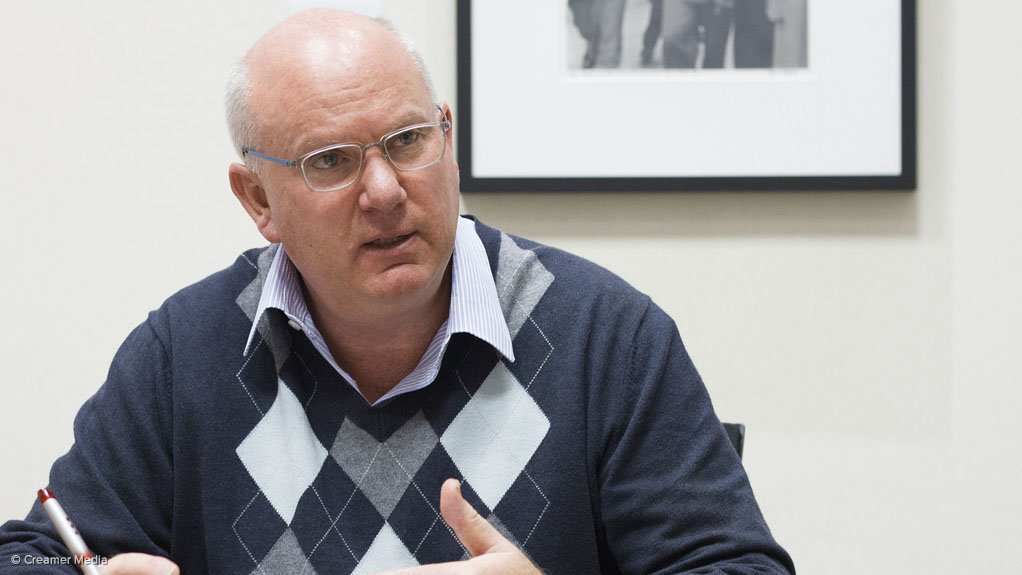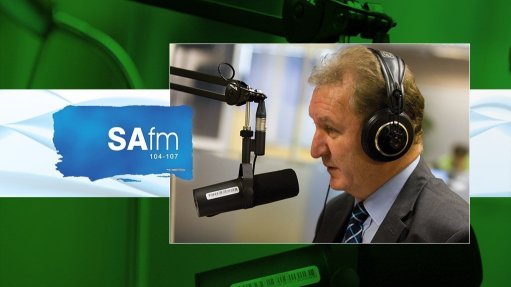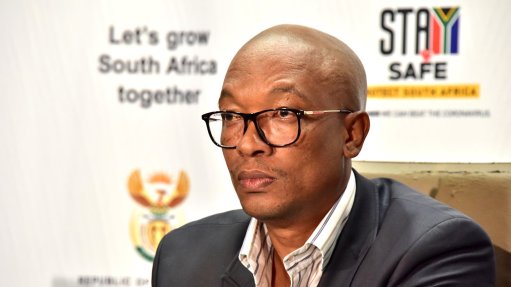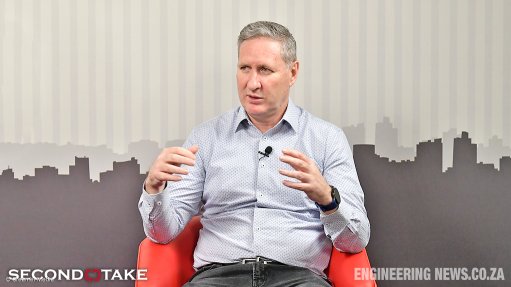Business holds small-business funding line, despite serious postreshuffle trust deficit





GROWTH BOOSTER The SASME Fund’s core objective is to support economic growth, create jobs and increase tax revenue in South Africa
Photo by Bloomberg
QUINTON DICKS It is imperative that corporate South Africa remain committed to placing South Africa on a path to inclusive growth
Photo by Duane Daws
QUINTON DICKS It is imperative that corporate South Africa remain committed to placing South Africa on a path to inclusive growth
Photo by Duane Daws
It is now well documented how President Jacob Zuma’s March 31 Cabinet reshuffle, which saw South Africa’s highly regarded Pravin Gordhan removed as Finance Minister, seriously undermined trust between government and its social partners, including business. The controversial move also placed the much-vaunted CEO Initiative – created precisely to help stave off the downgrades that followed swiftly in the reshuffle’s wake – in serious jeopardy.
However, while business has indicated that the relationship with government is on a far less stable footing, it has nevertheless decided to sustain support for the growth-boosting programmes conceived ahead of the reshuffle, including the creation of a R1-billion-plus fund to support small and medium-sized enterprises (SMEs).
Known as the South African Small and Medium-Sized Enterprise (SASME) Fund, the initiative is part of three work streams launched under the CEO Initiative, with its establishment having been formally announced by Discovery CEO Adrian Gore during a briefing at the Union Buildings in May 2016.
Business has concluded that the fund is even more relevant in light of the credit ratings downgrades, rising unemployment, declining business confidence and confirmation of the country’s descent into its first recession in eight years.
This position has been confirmed by SASME Fund CEO Quinton Dicks, who, nevertheless, acknowledges that the macroeconomic environment has made the fund’s continuation all the more challenging.
A key headwind is the prevailing negativity among potential local and offshore investors, a fact underscored in the South African Chamber of Commerce and Industry’s (Sacci’s) May Business Confidence Index (BCI), which declined to its lowest level this year, as well as the Rand Merchant Bank and Bureau for Economic Research BCI, which plummeted to levels last seen during the 2009 recession.
According to Sacci, “heightened political tension, additional economic policy uncertainty and lower credit ratings by ratings agencies, following the Cabinet reshuffle in March”, negatively impacted on the business climate.
Fund Objectives
Dicks tells Engineering News that the fund’s core objective is to support economic growth, create jobs and increase tax revenue. “[Therefore], the importance of this initiative is arguably greater now than ever before, and it is imperative that corporate South Africa remain committed to placing South Africa on a path to inclusive growth.”
The fund, he adds, will work with whoever helps to achieve its aim, which is to tackle the challenges that the SME sector is facing, with “government and labour [having] a significant role to play in addressing these issues”.
Dicks, who has more than 15 years’ experience in private equity and has worked for Metier, Old Mutual Investment Group and Brait, was appointed the fund’s CEO in January.
He explains that the principal investment objective of the SASME Fund, which has been registered as a public limited liability company, is to develop a portfolio of investments through channelling funds into existing fund managers already investing in SMEs.
“The SASME Fund will commit to and invest capital in private-equity funds that have high growth, profitability and sustainable employment growth as core elements of their investment thesis, cover the investment spectrum from small to smaller midmarket investments and have a mandate that enables them to meet the needs of the investment opportunity,” he tells Engineering News.
The primary intention of the fund, which operates through a company structure, is to stimulate economic growth and increased employment opportunities in South Africa through these investments, Dicks underscores. The fund will also stimulate nascent fund managers and generally support and promote institutional investment in the SME sector.
However, as the fund is not a grant, pledge or social-impact fund, targeting commercial returns will be a key aim, Dicks explains.
The SASME Fund will also attempt to help stimulate the SME ecosystem through in-house development and third-party support of initiatives that are aimed at addressing the challenges and barriers that SMEs face.
“This will include supporting the business development services sector, including driving mentorship and general capacity building, to help meet the needs of the broader SME sector,” Dicks says. He underscores the need for more widely available and more focused capacity building, as many SMEs are faced with challenges around scalability, management capability, skills development, entrepre- neurial development, access to markets and mentorship access.
While some SME challenges lie beyond the capability or remit of the fund, it will, nevertheless, aim to improve access to market, as well as dealing with the working capital constraints that stem from overdue invoices or late payments from government or the private sector, besides others.
The fund will further investigate the extent to which it can play a role in developing and enhancing programmes that will address these specific challenges, as well as develop the ecosystem and support structures that will improve the success rate and performance of SMEs.
It will also, where appropriate, leverage its stakeholder group and expertise for the benefit of the SME sector, as the stakeholder group has the unique ability to provide enhanced access to markets for the SMEs.
“It’s a significant growth opportunity for SMEs; it’s also an opportunity for the listed stakeholders and big business in general to address their enterprise development and supplier development challenges,” he posits.
Although a key aim for the fund includes a social compact, with the public sector aiming to match the private sector’s contribution, the fund will, at this stage, operate without any public funding.
In September 2016, Deputy President Cyril Ramaphosa, in reply to an oral Democratic Alliance question, admitted that government had not yet budgeted for its half of the funds to match the private sector’s contribution to the SASME Fund.
In April, former National Treasury director-general Lungisa Fuzile told the media that the South African government had no immediate plans to match the R1.5-billion. According to Fuzile, “it was not clear from a fiscal point of view that the immediate need is to add money”.
The fund currently has about 50 shareholders from listed private companies across industry, who have committed R1.5-billion. This includes a significant investment by the Public Investment Corporation (PIC).
Operating on a fund-of-funds model, the SASME Fund, in turn, will commit capital to several existing private-equity fund managers, with the funds being provided on a drawdown basis. This will depend on the volume and rate of the deal flow/ the fundraising cycles of the underlying funds, Dicks notes.
The number of funds selected will depend on the accreditation process that the SME fund will follow.
Potential fund managers will be identified according to initial screening criteria, which include fulfilling or matching the overall mandate of the SME fund, having a suitable investment record and sustainable team to implement the investment thesis. The funds should also have minimum scale.
“Industry best practice has informed the development of clear selection criteria and allows for the fair and consistent selection of intermediary fund managers. These criteria have been developed and adapted by the fund for its specific needs and will be fairly and consistently applied,” Dicks says.
Following initial screening, the fund’s professional team will conduct due diligence exercises on the identified funds. “Due diligence, if positive, will culminate in an investment proposal that is presented to an independent investment committee for unanimous decision,” Dicks says.
Depending on fund approval, there may be specific conditional requirements for the funds that will be continuously monitored, such as their adherence to the mandate and performance, with quarterly reporting also to be provided.
The SASME Fund’s senior professional team was appointed earlier this month and aims to start due diligence processes (which can take between three and six months) as soon as possible and accredit the first funds by September or October.
While acknowledging the time taken to put the fund operations in place, Dicks quips that the “[SASME Fund] is itself a startup”.
The SASME Fund is currently structured along traditional investment fund lines, operating within a five-year investment period and a five-year harvesting period.
However, the intention of the fund – based on its success – is to become an “evergreen, or perpetual, funding vehicle”, says Dicks, adding that, “ultimately, the fund’s investors would allow the fund to retain the capital within the company and reinvest it into the SME sector”.
Notwithstanding these aspirations, Dicks acknowledges that there are core issues that need to be considered by the fund, with the importance of fund coinvestment the most notable.
“We need to convince other investors to come on board. We can’t be the lone entity investing in these funds. Other government and institutional investors, such as State-owned enterprises and pension funds, need to . . . invest in these funds that operate in the SME space,” he stresses.
Dicks suggests that the support of fund coinvestment could lead to self-fulfilling benefits in the form of more expertise focused on the fund.
“Coinvestment will [result] in having more funds from fund managers aligned and focused on making investment into the SME sector successful. We would coordinate and pool our resources and learnings to drive better appropriate sustainable financial returns that result in higher levels of growth and sustainable employment,” he concludes.
Comments
Press Office
Announcements
What's On
Subscribe to improve your user experience...
Option 1 (equivalent of R125 a month):
Receive a weekly copy of Creamer Media's Engineering News & Mining Weekly magazine
(print copy for those in South Africa and e-magazine for those outside of South Africa)
Receive daily email newsletters
Access to full search results
Access archive of magazine back copies
Access to Projects in Progress
Access to ONE Research Report of your choice in PDF format
Option 2 (equivalent of R375 a month):
All benefits from Option 1
PLUS
Access to Creamer Media's Research Channel Africa for ALL Research Reports, in PDF format, on various industrial and mining sectors
including Electricity; Water; Energy Transition; Hydrogen; Roads, Rail and Ports; Coal; Gold; Platinum; Battery Metals; etc.
Already a subscriber?
Forgotten your password?
Receive weekly copy of Creamer Media's Engineering News & Mining Weekly magazine (print copy for those in South Africa and e-magazine for those outside of South Africa)
➕
Recieve daily email newsletters
➕
Access to full search results
➕
Access archive of magazine back copies
➕
Access to Projects in Progress
➕
Access to ONE Research Report of your choice in PDF format
RESEARCH CHANNEL AFRICA
R4500 (equivalent of R375 a month)
SUBSCRIBEAll benefits from Option 1
➕
Access to Creamer Media's Research Channel Africa for ALL Research Reports on various industrial and mining sectors, in PDF format, including on:
Electricity
➕
Water
➕
Energy Transition
➕
Hydrogen
➕
Roads, Rail and Ports
➕
Coal
➕
Gold
➕
Platinum
➕
Battery Metals
➕
etc.
Receive all benefits from Option 1 or Option 2 delivered to numerous people at your company
➕
Multiple User names and Passwords for simultaneous log-ins
➕
Intranet integration access to all in your organisation






















